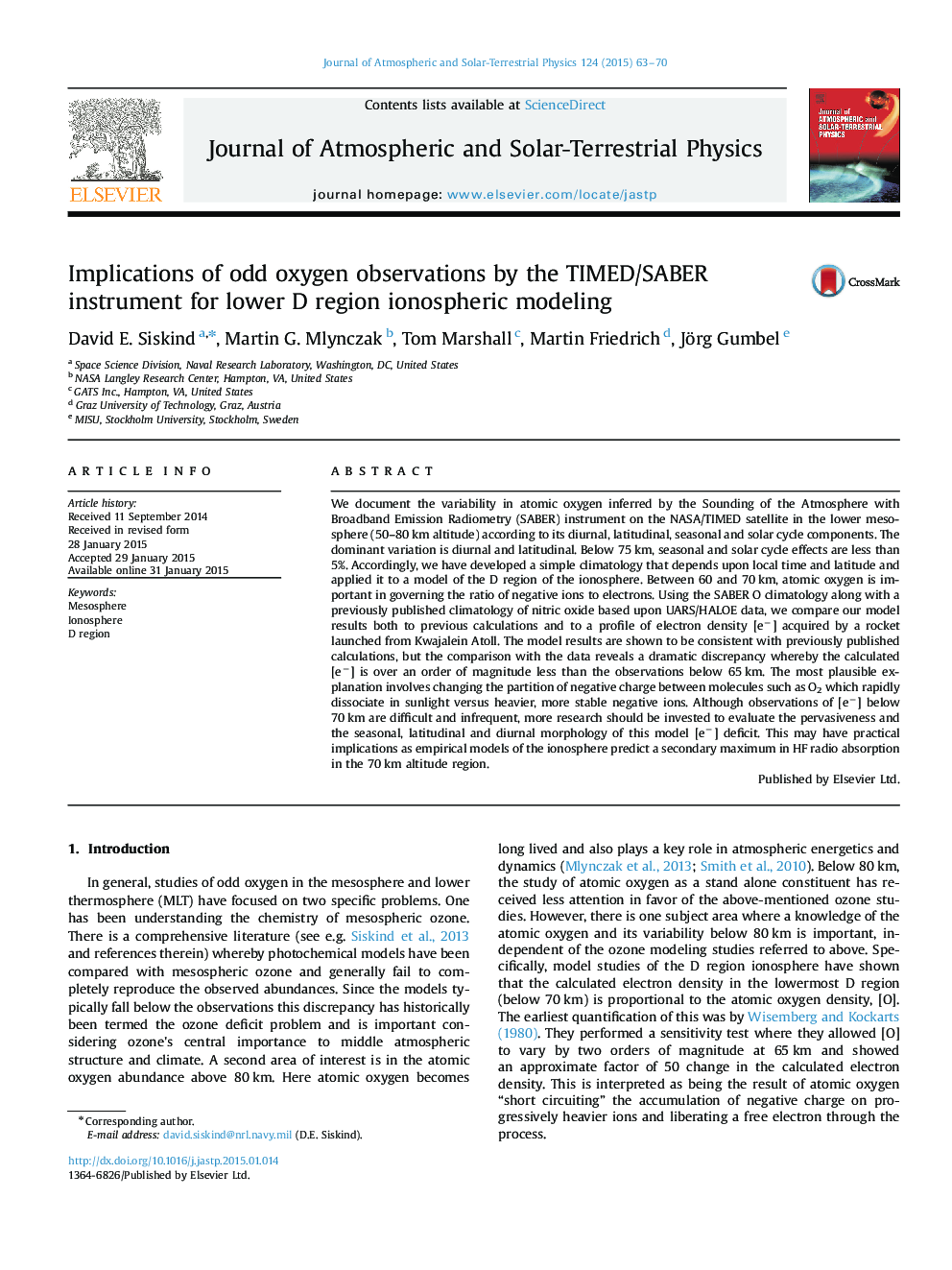| کد مقاله | کد نشریه | سال انتشار | مقاله انگلیسی | نسخه تمام متن |
|---|---|---|---|---|
| 1776542 | 1523618 | 2015 | 8 صفحه PDF | دانلود رایگان |

• New high quality oxygen data for lower and mid mesosphere presented.
• Oxygen data can be used as an input to a model of the D region ionosphere.
• Calculated electron densities fall below a recent observation.
We document the variability in atomic oxygen inferred by the Sounding of the Atmosphere with Broadband Emission Radiometry (SABER) instrument on the NASA/TIMED satellite in the lower mesosphere (50–80 km altitude) according to its diurnal, latitudinal, seasonal and solar cycle components. The dominant variation is diurnal and latitudinal. Below 75 km, seasonal and solar cycle effects are less than 5%. Accordingly, we have developed a simple climatology that depends upon local time and latitude and applied it to a model of the D region of the ionosphere. Between 60 and 70 km, atomic oxygen is important in governing the ratio of negative ions to electrons. Using the SABER O climatology along with a previously published climatology of nitric oxide based upon UARS/HALOE data, we compare our model results both to previous calculations and to a profile of electron density [e−] acquired by a rocket launched from Kwajalein Atoll. The model results are shown to be consistent with previously published calculations, but the comparison with the data reveals a dramatic discrepancy whereby the calculated [e−] is over an order of magnitude less than the observations below 65 km. The most plausible explanation involves changing the partition of negative charge between molecules such as O2 which rapidly dissociate in sunlight versus heavier, more stable negative ions. Although observations of [e−] below 70 km are difficult and infrequent, more research should be invested to evaluate the pervasiveness and the seasonal, latitudinal and diurnal morphology of this model [e−] deficit. This may have practical implications as empirical models of the ionosphere predict a secondary maximum in HF radio absorption in the 70 km altitude region.
Journal: Journal of Atmospheric and Solar-Terrestrial Physics - Volume 124, March 2015, Pages 63–70